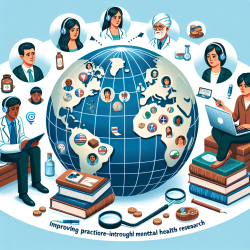The issue of child maltreatment (CM) is a significant public health concern in the United States, impacting over 90,000 high school-aged youth annually. Despite this alarming statistic, many prevention programs have traditionally focused on younger children, leaving a gap in effective programming for adolescents. Recognizing this oversight, the Childhelp Speak Up Be Safe Prevention Education Curriculum has been developed to address the unique needs of high school students.
The Importance of Prevention Programs for Adolescents
High school students are at a critical stage where they can begin to take an active role in their own safety and protection. The Childhelp Speak Up Be Safe curriculum is designed to empower these students with knowledge and skills to resist various forms of abuse. The program's pilot study aimed to evaluate its effectiveness in increasing students' understanding of safety-related resistance strategies.
Pilot Study Findings
The pilot study involved 269 students from an urban charter public high school who participated in pre- and post-surveys assessing their knowledge of RESIST strategies. The results were promising, showing significant improvements in students' ability to identify and apply these strategies. Specifically, the study found that:
- Students demonstrated increased knowledge of safety-related resistance strategies after participating in the curriculum.
- The program effectively engaged students in discussions about resisting abuse and identifying safe situations.
- Counselors reported that students became more aware of internet safety and how to protect their private information.
Implementing Evidence-Based Strategies
The Childhelp Speak Up Be Safe curriculum utilizes a strengths-based approach, incorporating Bronfenbrenner’s social-ecological systems theory. This framework emphasizes the interconnectedness of individuals within their social environments and aims to empower students by building on protective factors present in their lives.
The curriculum includes interactive lessons with PowerPoint slides, group discussions, and scenario-based activities that encourage students to apply what they have learned. By focusing on multiple forms of maltreatment rather than a single type of abuse, the program provides a comprehensive approach to child safety education.
The Need for Further Research
The pilot study's positive outcomes highlight the potential of the Childhelp Speak Up Be Safe curriculum as an effective tool for preventing child maltreatment among high school students. However, further research is needed to validate these findings through large-scale efficacy trials. Such studies will help determine the program's generalizability across diverse populations and inform future policy development.










